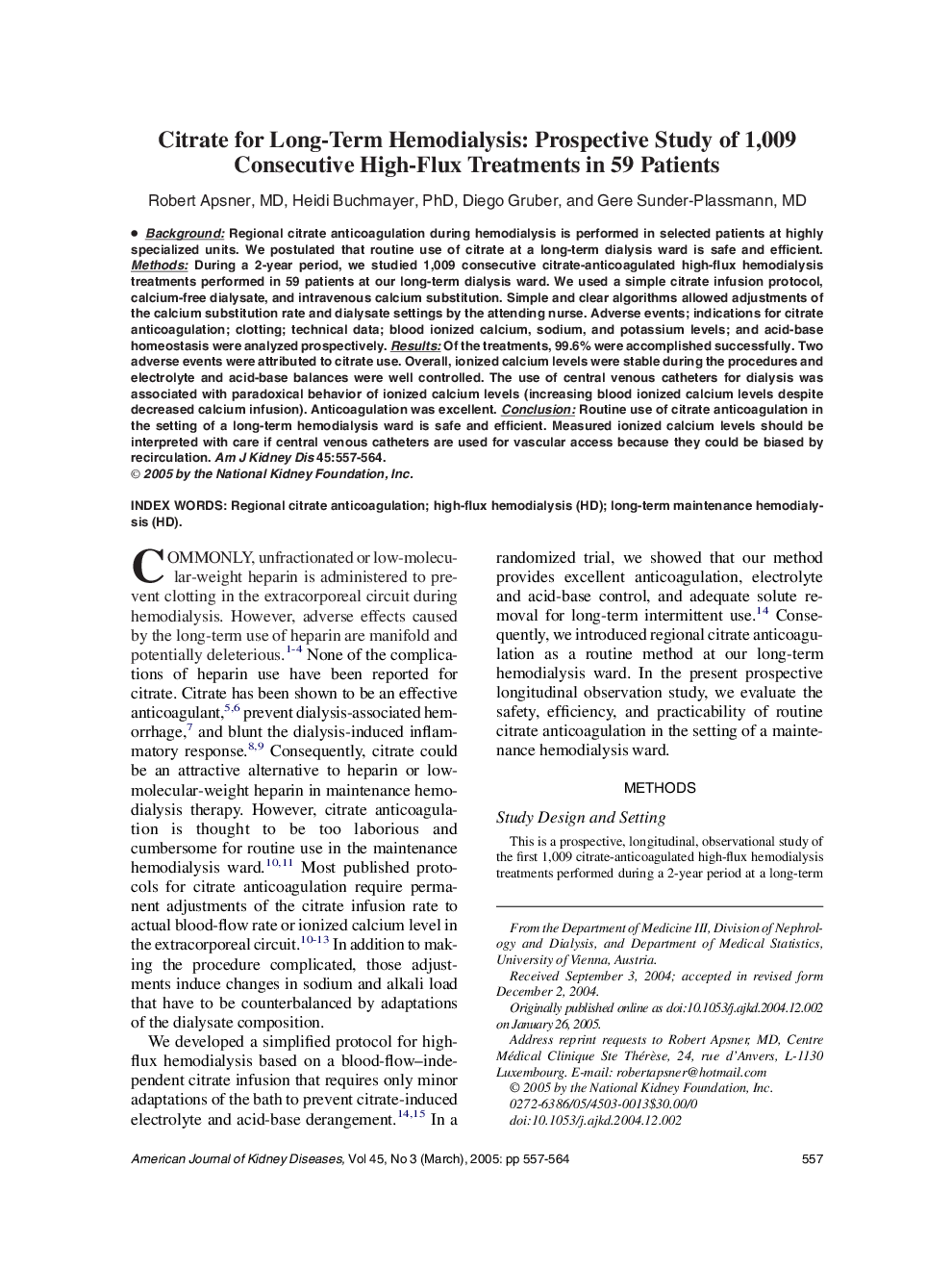| Article ID | Journal | Published Year | Pages | File Type |
|---|---|---|---|---|
| 10047705 | American Journal of Kidney Diseases | 2005 | 8 Pages |
Abstract
Background: Regional citrate anticoagulation during hemodialysis is performed in selected patients at highly specialized units. We postulated that routine use of citrate at a long-term dialysis ward is safe and efficient. Methods: During a 2-year period, we studied 1,009 consecutive citrate-anticoagulated high-flux hemodialysis treatments performed in 59 patients at our long-term dialysis ward. We used a simple citrate infusion protocol, calcium-free dialysate, and intravenous calcium substitution. Simple and clear algorithms allowed adjustments of the calcium substitution rate and dialysate settings by the attending nurse. Adverse events; indications for citrate anticoagulation; clotting; technical data; blood ionized calcium, sodium, and potassium levels; and acid-base homeostasis were analyzed prospectively. Results: Of the treatments, 99.6% were accomplished successfully. Two adverse events were attributed to citrate use. Overall, ionized calcium levels were stable during the procedures and electrolyte and acid-base balances were well controlled. The use of central venous catheters for dialysis was associated with paradoxical behavior of ionized calcium levels (increasing blood ionized calcium levels despite decreased calcium infusion). Anticoagulation was excellent. Conclusion: Routine use of citrate anticoagulation in the setting of a long-term hemodialysis ward is safe and efficient. Measured ionized calcium levels should be interpreted with care if central venous catheters are used for vascular access because they could be biased by recirculation.
Keywords
Related Topics
Health Sciences
Medicine and Dentistry
Nephrology
Authors
Robert MD, Heidi PhD, Diego Gruber, Gere MD,
